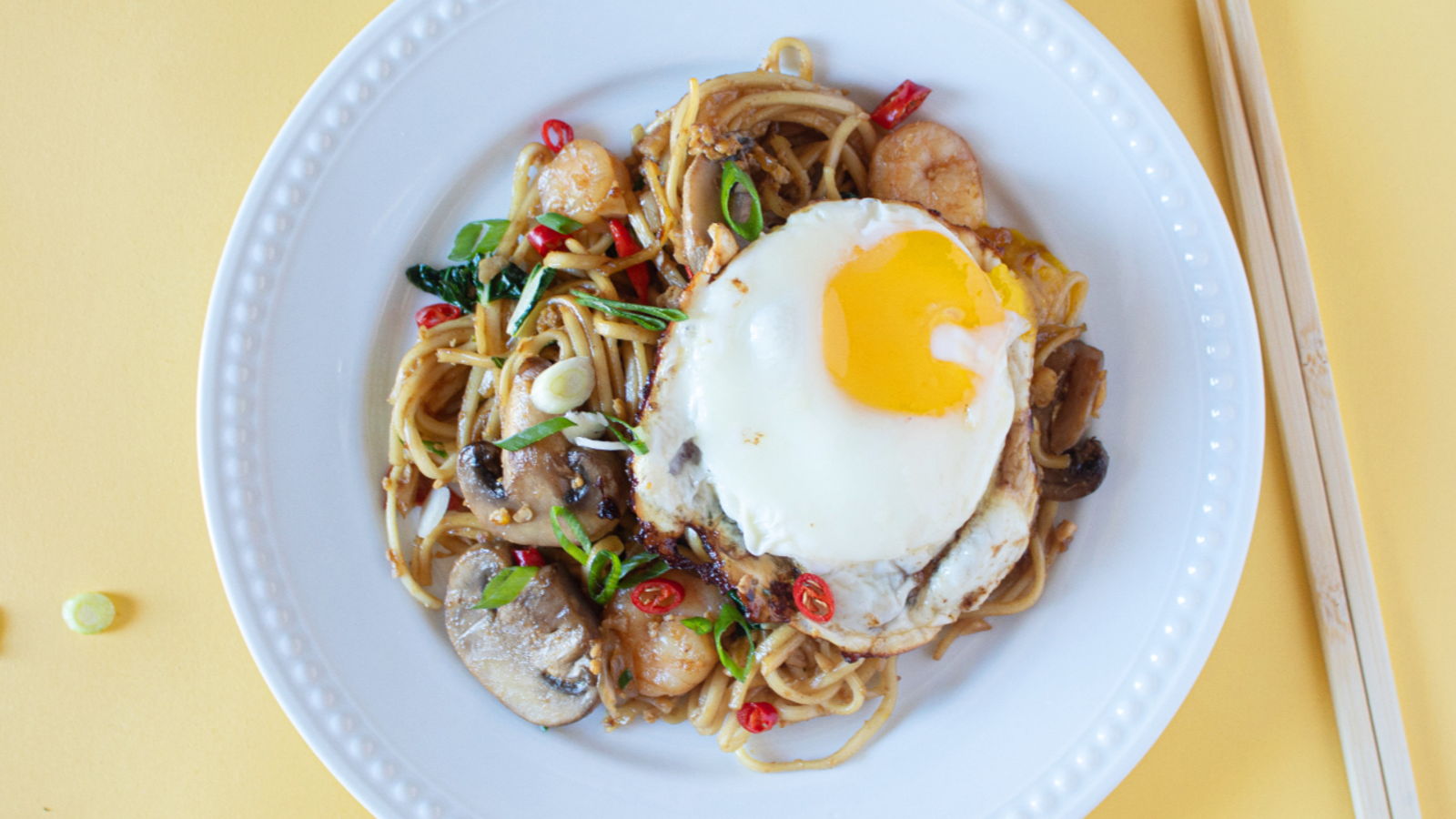Mie goreng simply means ‘fried noodles’ in Bahasa Indonesia. A plate of authentic mie goreng from Indonesia can be easily prepared if there is chilli and the indispensable 'kecap manis' or sweet soy sauce. Just like many noodles dishes, mie goreng is a local dish which has influence from the Chinese immigrants.
Of course, there are many regional varieties of this dish. This recipe is the most common variation and is available in many restaurants within Indonesia and abroad. As a matter of fact, this is the simplest type of mie goreng to prepare as you may already have all the ingredients in your kitchen.
Sweet soy sauce
Sweet soy sauce is an Indonesian creation. It has added palm sugar unlike the typical soy sauce which is salty and its consistency is almost honey-like. Due to its origins, this sauce is used in many Indonesian dishes.
If you aren't able to find sweet soy sauce, use normal the soy sauce and brown sugar (1:1.25) as a quick substitute. However, the taste will be different and will not be as good because sweet soy sauce has added herbs and aromatics.
Margarine instead of oil
While oil is more commonly used for the dish in Indonesia, I highly recommend using margarine which makes the dish much more fragrant and tasty. You may also use butter if margarine is unavailable.
Spicy or non-spicy
When it comes to mie goreng, there needs to be a bit of spice. Therefore, fresh chillies are added to the dish. Since the dish is sweet and savoury, the addition of spice goes harmoniously with the flavours. If you love spicy dishes, add sambal bajak, a type of spicy chilli paste made of chillies, garlic, shallots, dried shrimps, shrimp paste and sugar to the dish. Otherwise, opt for sriracha as it is a fitting chilli sauce for mie goreng.
For non-spicy mie goreng, remove chillies from the list of ingredients.
Vegetables
Mie goreng is a versatile dish which can be adapted according to your diet. I love adding mushrooms albeit they are not that common in local mie goreng stalls and restaurants in Indonesia. Pak choi on the other hand is a familiar ingredient in the dish. Julienned carrots, sliced cabbage and tomato wedges are sometimes added to the noodles too. So, feel free to add any vegetables to make the dish more wholesome.
Protein in mie goreng
For this recipe, we recommend prawns and as such, the dish is referred to as ‘mie goreng udang’ in Indonesia. Feel free to use chicken (ayam), mutton (kambing) or beef (sapi). If you are vegetarian, omit the meat.
Avoid soggy noodles
When cooking mie goreng, it's best to use high heat to capture the breath of wok. Allowing the dish to cook at low heat will turn the noodles soft as it takes a longer time to cook.
While it may be difficult to replicate the heat of the stove in restaurants or of food vendors, you may use better tools to ensure that high heat is contained and evenly spread within the wok. For such extreme heat, cast iron or carbon steel cookware would be most recommended. However, many do cook mie goreng at home with a non-stick pan for its ease of usage.
Type of noodles
Thick egg noodles are typically used in mie goreng. You can use noodles which are sold as lo-mien or even spaghetti for this recipe. Egg noodles are sold as dried, fresh or frozen depending on your location. In this recipe, I used about 170g of cooked noodles which is enough for 3 portions as suggested.

